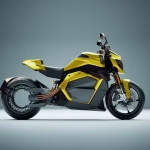The motorcycle industry is undergoing a major transformation as electric motorcycles rise to challenge traditional gas-powered bikes. With increasing concerns about climate change, rising fuel costs, and technological innovation, riders are now rethinking their choices. The question is no longer if electric motorcycles will dominate the future—it’s when.
While electric bikes promise sustainability and cutting-edge performance, gas motorcycles still hold a strong position thanks to their power, range, and familiarity. Both types offer unique advantages, but understanding their differences helps riders make better decisions for the road ahead.
The Rise of Electric Motorcycles
Electric motorcycles have seen a rapid surge in popularity over the past decade. Major manufacturers like Harley-Davidson, Zero, and Energica have invested heavily in electric technology, pushing performance boundaries while reducing emissions.
This growth is driven by innovation in battery technology, offering longer ranges and faster charging times. As charging infrastructure expands globally, electric motorcycles are becoming a practical and appealing choice for both urban and long-distance riders.
Why Riders Are Switching to Electric
Environmental awareness plays a key role in the shift toward electric mobility. E-motorcycles produce zero tailpipe emissions, helping reduce air pollution and carbon footprints. They’re also quieter, offering a smoother and more relaxing ride through city streets.
Beyond sustainability, electric bikes are cheaper to maintain. With fewer moving parts, they require less servicing—no oil changes, spark plugs, or complex exhaust systems. Over time, this translates into significant savings for riders.
The Enduring Power of Gas Motorcycles
Despite the electric boom, gas-powered motorcycles remain the dominant force in the industry. Many riders are drawn to the raw performance, sound, and feel of combustion engines. The deep rumble of a gas engine offers a sensory experience that electric bikes can’t replicate.
Additionally, gas motorcycles boast superior range and refueling convenience. A quick stop at a gas station takes minutes, compared to the hours required to fully charge most electric bikes. For touring enthusiasts and adventure riders, this convenience is a major advantage.
Comparing Performance and Acceleration
Electric motorcycles are renowned for their instant torque, offering breathtaking acceleration from a standstill. Riders often describe the experience as seamless and exhilarating, with no gear shifting or lag. Models like the Zero SR/F and Harley-Davidson LiveWire can go from 0 to 100 km/h in under 3 seconds.
Gas motorcycles, however, still excel in top-end power and sustained performance. For long rides on highways, their consistent fuel delivery and higher speeds provide a sense of control that some riders prefer. The performance battle depends on riding style—electric for instant speed, gas for endurance.
The Cost Factor: Purchase, Maintenance, and Ownership
When it comes to price, electric motorcycles tend to be more expensive upfront due to costly battery components. However, this gap is narrowing as technology becomes more affordable and competition increases.
Electric bikes shine in long-term ownership. Maintenance costs are drastically lower since there are no oil changes, filters, or clutch systems to replace. Charging an e-motorcycle is also much cheaper than refueling, especially with home charging options. Gas bikes, on the other hand, remain more affordable initially but accumulate higher costs over time.
Range and Charging Infrastructure
One of the most discussed limitations of electric motorcycles is range. While premium models now offer 200–300 kilometers per charge, gas bikes still outperform them easily with ranges exceeding 400 kilometers on a single tank.
Charging infrastructure is improving rapidly. Public charging stations are becoming more common in cities, and fast-charging technology now allows some e-bikes to reach 80% capacity in less than an hour. However, riders in rural or remote areas may still find gas motorcycles more reliable for longer journeys.
The Riding Experience
The riding experience between the two is strikingly different. Electric motorcycles deliver smooth, vibration-free rides with minimal noise, ideal for daily commutes and urban travel. The lack of gears and clutch simplifies riding, making them accessible even to beginners.
In contrast, gas motorcycles offer a mechanical connection that appeals to traditionalists. The growl of the engine, the shifting of gears, and the physical engagement make the experience feel raw and authentic—qualities that continue to attract passionate riders.
Environmental and Social Impact
The environmental benefits of electric motorcycles are undeniable. With no tailpipe emissions, they contribute to cleaner air and reduced noise pollution in urban areas. As governments push for net-zero targets, incentives for e-vehicles are increasing, making them more attractive to buyers.
However, sustainability depends on how electricity is produced. In regions where power still relies heavily on fossil fuels, the environmental advantage of electric bikes may be less pronounced. Over time, as renewable energy adoption grows, their benefits will only strengthen.
Technological Advancements and Innovation
Electric motorcycles represent the forefront of innovation. From regenerative braking to smartphone integration and over-the-air updates, they’re setting new standards for smart riding. Some models even feature AI-driven systems that analyze rider behavior and optimize performance.
Meanwhile, gas motorcycles are incorporating hybrid technologies and digital enhancements like traction control, ride modes, and GPS integration. Both categories are evolving rapidly, blurring the lines between traditional and modern riding experiences.
Which Is Better for Long-Distance Riding
For now, gas motorcycles remain the better choice for touring and adventure riding due to superior range and fueling convenience. Riders who frequently travel long distances or across remote areas still rely on the predictability of gas stations.
Electric motorcycles, however, are catching up. With expanding fast-charging networks and battery-swapping technology, long-distance electric touring is becoming more feasible every year. Future advancements may soon eliminate the gap entirely.
Are Electric Motorcycles Worth the Investment
Yes, for many riders, they are. Although the initial cost is higher, savings on fuel, maintenance, and environmental impact make them a worthwhile investment in the long run. They also future-proof your ride as more cities move toward restricting fossil-fuel vehicles.
Electric motorcycles align perfectly with the growing demand for clean mobility. Riders who value sustainability, innovation, and efficiency will find them an excellent alternative to traditional bikes.
Will Gas Motorcycles Eventually Disappear
It’s unlikely that gas motorcycles will disappear completely anytime soon. Enthusiasts, racers, and adventure riders will continue to cherish them for their power and feel. However, as governments tighten emission standards and consumers prioritize sustainability, their dominance will gradually fade.
The future may see a balanced coexistence, where electric motorcycles lead the market while gas bikes remain as a niche choice for purists and collectors.
Conclusion
The debate between electric and gas motorcycles reflects a broader global shift toward sustainable transportation. Electric motorcycles represent progress—clean, efficient, and technologically advanced. Gas motorcycles, on the other hand, embody heritage, performance, and timeless passion.
The future of two-wheel travel isn’t about choosing one over the other but embracing innovation while preserving tradition. As technology continues to evolve, both forms will coexist—each offering riders the freedom, thrill, and connection that define the spirit of motorcycling.







